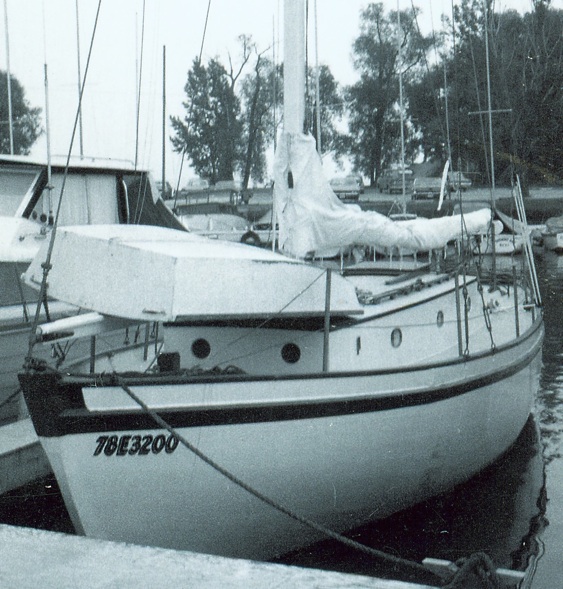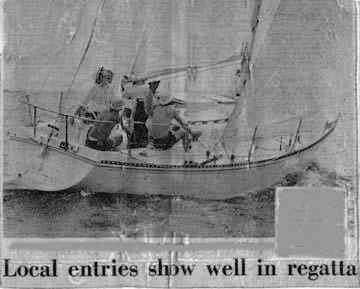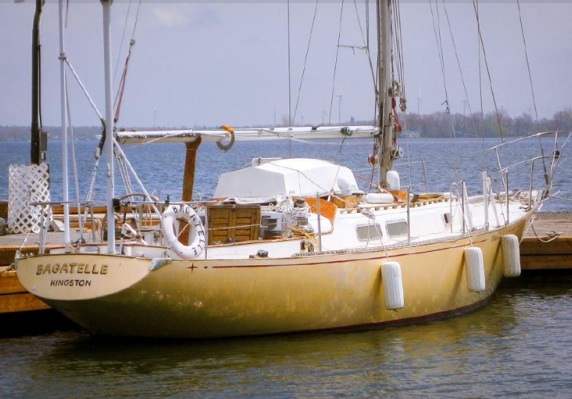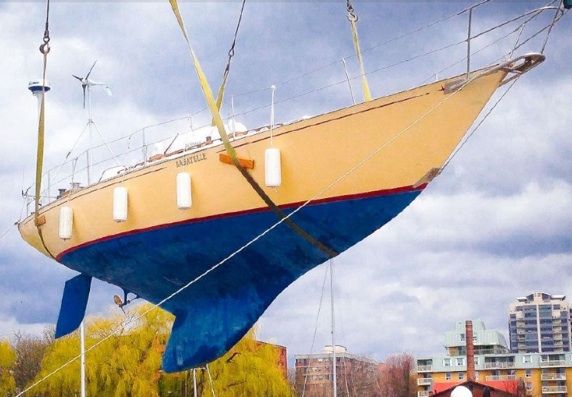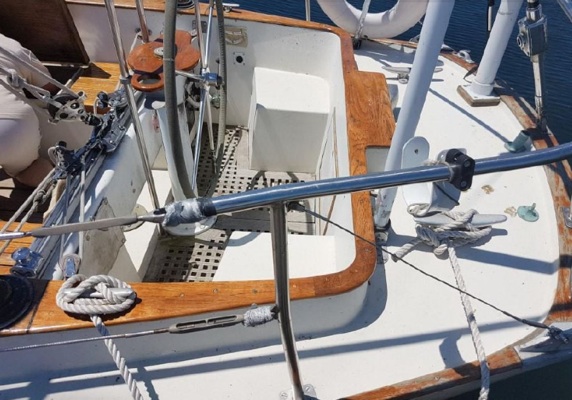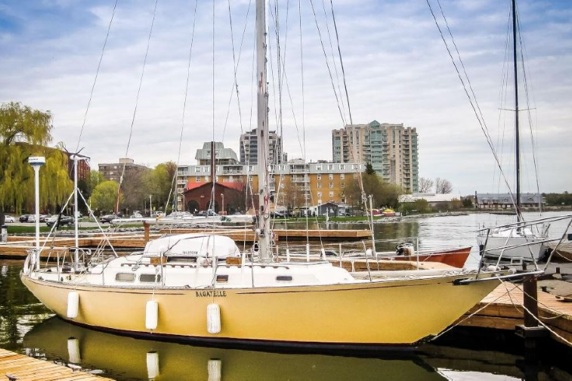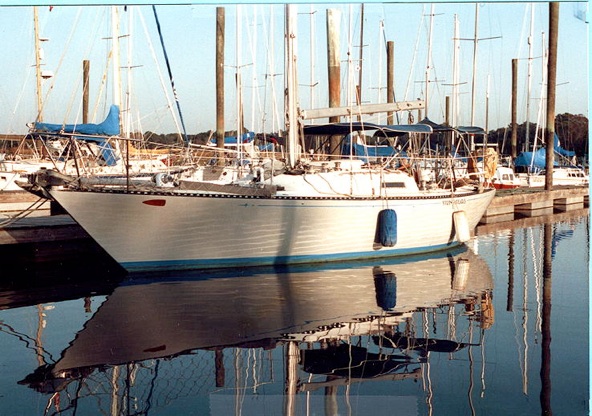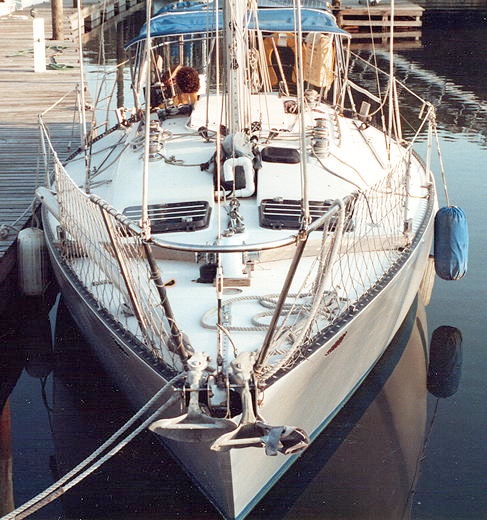This is the story for the search for the perfect yacht that I could sail around the world. It began in 1968 in Ontario Canada, I was a young engineer who had just immigrated to Canada. I didn’t have much money but I had a good job and I was able to borrow the money for what I thought was something capable of world cruising.
I modeled my boat requirements after Wanderer III, the Hiscock’s world voyaging 30 footer,
Wanderer III has an 8.5 ft beam and looks very pretty. I had met Eric and Susan at the London Boat show in 1963? and got a lot of encouragement from them both as we sat in the main salon of their yacht, in the pool at Earl’s Court.
I found a 32 foot Newfoundland wooden sloop that looked like Wanderer III.
I learned how to sail on this boat.
But she was not something I wanted to sail across an ocean in. She was slow and wet inside because the hull was not watertight in stormy weather. I bought a modern cruiser racer from C&C, right off the showroom floor. With an experienced crew we won a lot of club races. She was roomy and sailed fast off the wind, but not so hot to windward because of the full bow which had room for a double V-berth. In a choppy sea she didn’t like going to weather. A great Lake boat and well respected even today by club racers, and I had a lot of fun with her. But I wouldn’t cross an ocean in her. I raced on a lot of boats
on the Great Lakes. One in the SORC, and chartered yachts in the Caribbean. The only boat I fell in love with was a Redline 41, but she was too big to single hand.
This was Bagatelle and owned by a sailor in Ontario near the Bay of Islands, Kingston. We sailed her from Toronto to Kingston and she was a lovely boat, designed in the 60s by George Cuthbertson. I think this was where I began to covet a boat with a counter and small deck aft of the wheel.
I sailed another Redline 41 called Jacknife out of Miami in the Ocean triangle race of the SORC.
Condor, a Redline 41 won the SORC, one year. They have that wedge shaped bow of George Cuthbertson. The same bow appeared later in the C&C 3/4 ton, which is what distinguished it from the production C&Cs of the 70s and 80s, and made it such a weatherly design.
I couldn’t afford the Redline 41, and I thought it too big and heavy to sail short handed. So I bought the C&C 35 and raced her for a couple of years.
But lucky for me, in the summer of ‘74 there was an oil crisis around the world and wealthy people refused to spend their money on custom yachts at C&C, and some dozen or so skilled yacht builders who just a year before had been building a pair of 61 footers for a quarter of a million a piece, were suddenly about to become unemployed. To keep them in jobs the sales department placed an order to build ten small yachts ‘on spec’ if the builder could keep the base price below $45,000 ($250,000 in todays money.) And so they built them. And then they built five more, and I got the #15 hull.
It had a counter stern with a small aft deck, and the wedge shaped bow, and looked beautiful.
I knew it would be a good sea boat. And how right I proved it to be. And here is the story.


